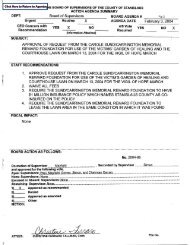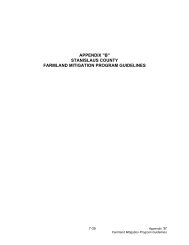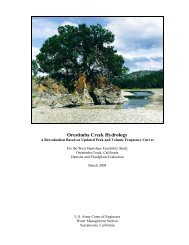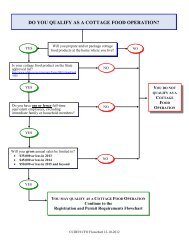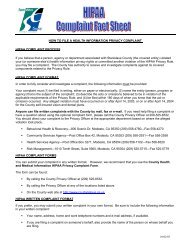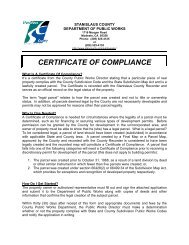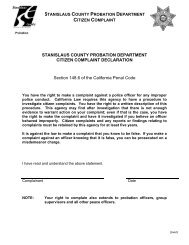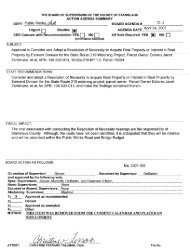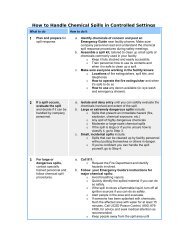Orestimba Creek Feasibility Study - Stanislaus County
Orestimba Creek Feasibility Study - Stanislaus County
Orestimba Creek Feasibility Study - Stanislaus County
Create successful ePaper yourself
Turn your PDF publications into a flip-book with our unique Google optimized e-Paper software.
Economics Appendix – Draft Report - <strong>Orestimba</strong> <strong>Creek</strong> <strong>Feasibility</strong> <strong>Study</strong>, <strong>Stanislaus</strong> <strong>County</strong>, California – September 2012<br />
6.5 Project Performance – With Project Conditions<br />
Table 6-10 and Table 6-11 below show a comparison of project performance under both with<br />
and without project conditions by economic impact area.<br />
The annual exceedance probability measures the chance of having a damaging flood in any given<br />
year. As larger increments are analyzed, the annual exceedance probability (AEP) drops.<br />
The long-term risk numbers measure the chance of having one or more damaging flood over a<br />
giver period of time. As shown in Table 6-11 building the chevron levee reduces the chance of<br />
getting damaged (within the Urban EIA) over the next 30 years from 100% under the without<br />
project condition to only 1% with the project.<br />
The assurance probability measures the probability of not being damaged if a given event were<br />
to occur. As with the other measures, project conditions reduce the risk and larger projects have<br />
a greater reduction in risk than small projects. The Assurance for the 1% annual chance event is<br />
often targeted to determine if a project meets Corps criteria for levee certification. It is important<br />
to note the relationship between AEP and Assurance in determining project accomplishment.<br />
For example, in the rural impact area, adding the channel modifications takes the area from a 1%<br />
annual chance of non-damage to a 5% chance of non-damage due to a 1% annual chance flood<br />
event. To be 90% confident that the 1% annual chance event can pass without causing damage<br />
in the rural impact area, a larger project with a smaller AEP must be constructed. This often<br />
causes confusion in how to identify the performance of a project in a single traditional term such<br />
as “100-year level of protection,” and as per the guidance ER 1105-2-101, the Corps has dropped<br />
all reference to describing level of protection.<br />
It is noted that the Assurance for the chevron levee in the urban area is extremely high even for<br />
low frequency events. This is due to the relatively small change in stages going from frequent to<br />
non-frequent events in an alluvial fan floodplain. While Assurance appears high, the federal<br />
interest chevron levee still does not meet FEMA levee certification criteria as it falls about 1.5<br />
feet short of the FEMA certification criteria. According to EC-1110-2-6067, FEMA levee<br />
certification requires a levee to be either: a) 3ft above the mean 1% annual chance WSEL and<br />
has 90% Assurance for the 1% annual chance event OR b) 2ft above the mean 1% annual chance<br />
WSEL and 95% Assurance for the 1% annual chance event. The levee for Alternative 3 (Local<br />
Plan) would meet FEMA levee certification criteria.<br />
41




